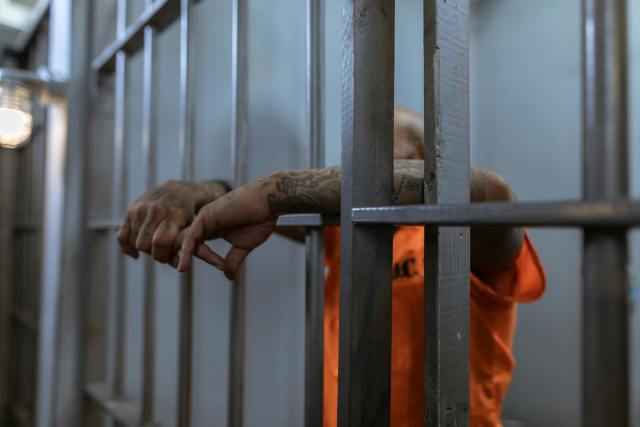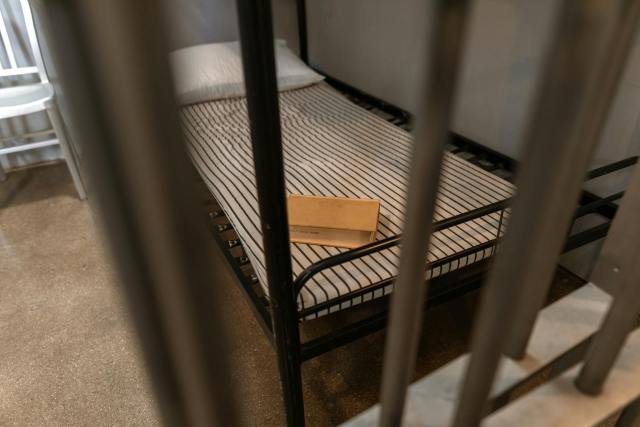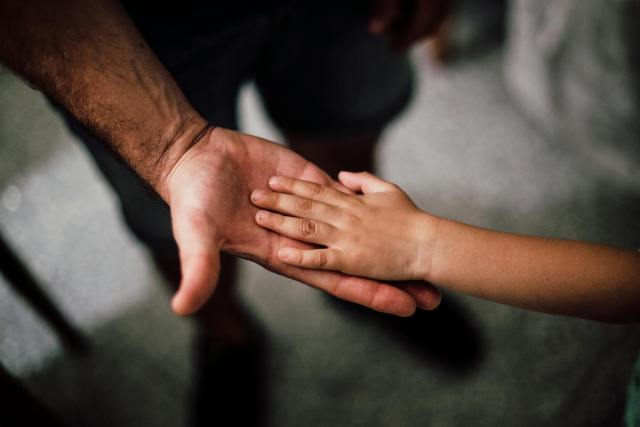With hopes of getting state funding to expand, renovate, and build new jails and juvenile detention facilities around the state, local governments in Louisiana have submitted applications to a criminal justice funding commission requesting more than $500 million.
Only a limited portion of those requests are likely to be filled — at least for now. Through a bill passed this fall, the state has set aside between $100 million and $150 million for a new correctional construction boom. Juvenile facilities will be given priority, officials said.
Among the requests submitted for youth campuses are three regional juvenile detention facilities — a $62 million, 96-bed facility for the Acadiana region, a $37 million, 56-bed structure for the River Parishes, and a $39 million, 56-bed facility in Rapides Parish for the Central Louisiana Juvenile Detention Authority, including Grant, Avoyelles, LaSalle, Vernon, Winn, Catahoula and Concordia Parishes.
Some of the state’s main urban areas also filed applications, including East Baton Rouge, which requested support to build a $75 million, 80-bed juvenile detention center that would also accommodate youth from Iberville, Pointe Coupee, and West Baton Rouge, and Lafayette Parish, which hopes to build a $165 million, 841-bed jail, which includes a special dorm to house 17-year-olds charged as adults.
The state commission that will allot the money also received a $26 million request from the Jackson Parish Sheriff’s Office — which already operates a troubled detention facility in Jonesboro— to build an additional 64-bed annex designated specifically for juveniles.
The applications were prepared in the wake of measures by Gov. Jeff Landry and state legislators that moved 17-year-olds from the juvenile system into adult jails and Act 3, which could allow the prosecutions of many more kids as adults, if voters pass it in March.

In April, after the measure went into effect mandating that 17-year-olds be treated as adults, some local jails struggled, because the federal Prison Rape Elimination Act requires that jails provide housing that keeps youth under the age of 18 separated from adult inmates, in all ways of contact, both sight and sound.
In East Baton Rouge, Sheriff Sid Gautreaux refused to put 17-year-olds in the adult jail, saying conditions at the facility weren’t fit to safely house juveniles. In Lafayette, the juvenile detention facility was written up by licensing inspectors in August for continuing to house 17-year-olds. In both instances, some 17-year-olds were transferred to Jackson Parish as a result.
While many of the newest statewide measures will shuffle more youth into the adult system, the planned burst of new juvenile facilities is intended to address gaps in juvenile pre-trial detention facilities and in slots in state custody that pre-date Landry’s new policies.
Other funding requests focused on constructing and repairing adult facilities. Landry, working with the legislature, has enacted laws that appear likely to increase adult jail and prison populations in Louisiana — which already had one of the nation’s highest incarceration rates. In the adult-facility applications, sheriffs described the new jailbeds as necessary because of imminent rises in inmate populations.
“Given the anticipated increase in arrests and incarcerations,” wrote the St. Landry Parish Sheriff’s Office in their application for an $8 million, 40-bed jail addition, “the proposed expansion aims to create sufficient additional capacity to not only meet current demand but also to accommodate future growth in inmate populations, thereby reducing reliance on external facilities and associated costs.”

If Louisiana found $500 million to fund every submitted application, the proposals would create an additional 2,000 jail and juvenile-detention beds across the state — though it’s possible some beds may be decommissioned after new facilities are built.
Some youth advocates see the funding commission as a doubling down of failed juvenile-justice policy, and argue the state should instead be focused on funding community-based preventative services.
“These facilities that exist now are understaffed and these folks are not trained in restorative practices the way they need to be,” said Antonio Travis with Families and Friends of Louisiana’s Incarcerated Children. “We want a system where instead of continuously investing in these prisons, we’re investing in community alternatives,” he said.
That way, “while a kid is undergoing rehabilitation, they can still get support from their family, within their community.”
Most applications can’t be granted at this point

The Criminal Justice Priority Funding Commission — which is overseeing the application and funding process, along with the application process — were established by a bill sponsored by Sen. Heather Cloud (R-Turkey Creek) during the legislative session last summer.
Initially, Cloud’s bill only described funding to expand local juvenile-detention facilities, because many parishes do not have their own juvenile-detention center and so they must sometimes send arrested kids far away from their parish. But before Cloud’s bill passed, it was amended, to allow local governments, sheriff’s offices, state agencies, and even private organizations to apply for funding a range of criminal-justice-related infrastructure projects.
The applications will be scored by a working group composed of Division of Administration staff and “state and local public agencies or entities and stakeholders” based on a number of criteria including state priorities, funding mechanisms, and resiliency and sustainability.
Those scores will then be submitted to the commission to review and submit recommendations to the Joint Legislative Committee on the Budget for final approval.
According to a guidance document on the DOA website, the working group was supposed to submit scores to the commission by October or November. But in response to a public records request, a DOA records custodian said that the department did not have any records of those scores and the agency did not respond to The Lens when asked for a timeline for funding decisions.
Despite the commission’s relatively small budget to date, it could receive more money in the future — and the applications that have been received may influence how much it gets.
“That might give us a good idea going forward,” said Christopher Walters, Landry’s deputy executive counsel, at a commission meeting in August. “Should additional money become available or should the legislature wish to put some additional money into the fund in future years, we can have those applications already on board.”
Juvenile detention facilities move to the front of the queue

Some applications had nothing to do with juveniles. For instance, the St. Tammany Parish Sheriff’s Office is asking for funding to renovate a new building for their narcotics unit, and the Lafayette Parish Sheriff’s Office is looking for money towards a new evidence-storage space.
Still, it appears the commission is most focused on juvenile detention centers — which lawmakers believe can provide bedspace for both pre-adjudicated youth and kids sentenced to state custody.
For years, many local governments and law enforcement agencies around the state have complained that they have no space to house newly arrested youth whose judges have ruled that they should stay in custody until trial and sentencing. When a verdict is reached in juvenile court, it’s known as “adjudication;” youth who are sentenced to state custody are placed in the juvenile version of prison, known as “secure care.”
While there are around a dozen pre-trial juvenile detention centers around the state, some jurisdictions without a designated local detention center have regularly resorted to sending kids to facilities hours away. Some have even been sent out of state, in costly arrangements that may violate a state law requiring detention facilities that hold Louisiana children to be licensed by in-state agencies.
“We are trying to prioritize funding for regional juvenile facilities,” Walters said.
Meanwhile, state secure-care facilities have also become overcrowded.
Seeking to solve both problems at once, the funding commission set a requirement for local juvenile-detention facilities that receive state funding to reserve 30% of their bed capacity for kids in state custody.
Detention centers funded through the new state money must hold both pre-trial and post-adjudication kids

Proponents of the measures see a number of benefits to that arrangement. At a time when there is a statewide shortage of juvenile beds at all levels, it will expand housing options for both pre- and post-adjudication kids. Plus, the state-placed kids will provide the new detention centers with a stable revenue stream – because the state will be paying the local detention centers to keep post-adjudication kids who were placed in state custody.
They also argue that the arrangement allows more kids to be held in the communities where they are from, near their loved ones.
“The broader idea of this entire commission is to get back to a more regional model, so our juveniles can stay closer to home, be closer to family there — to the extent that family wants to be involved —and to keep them local in their communities so that when they do return back they return back into their community and they are still part of their community,” Walters said.
But some advocates worry that the arrangements create some negative financial incentives, and lead to worse outcomes for incarcerated kids — as demonstrated by the results coming out of Jonesboro, in north Louisiana.
At the end of November, OJJ ended its contract with the jail in Jonesboro run by the Jackson Parish Sheriff’s Office, which will no longer house OJJ’s secure-care kids. For months, youth held there had reported abuse and mistreatment — including being held in solitary confinement for days on end, pepper sprayed, tased, and denied visitation with family.
OJJ never publicly expressed concerns over conditions at Jackson. But inspectors from the state’s Department of Children and Family Services found scores of deficiencies when they visited the facility last year.
In ending the contract a year early, OJJ claimed that the Jackson jail was always a short-term solution for kids, and pointed to a secure-care facility in Monroe that had opened months prior.
But the Jackson Parish Sheriff’s Office is apparently trying to find ways to get back in the business of holding youth from state custody. In the recent round of applications, Jackson Parish applied for nearly $30 million in funding to build an additional, 37,000 square foot facility that would house approximately 64 youth.
Will local detention centers provide enough resources for youth with longer sentences?
Andrea Armstrong, a law professor at Loyola University in New Orleans and the founder of Incarceration Transparency, said that she’s concerned that local detention centers housing kids in state custody could encounter some of the same problems that local jails encounter when housing adults in state custody.
Specifically, individuals that are released from custody “with fewer resources and skills to support a successful re-entry back into their communities.”
“Jails are built and designed as short-term facilities,” Armstrong said. “How do you actually facilitate school? How do you facilitate family time, which is particularly important for youth if there’s no visitation space, or if the visitation space is limited to one person at one window, instead of a contact visit in a free and open space where the families can spend time together, right?”
Though the entire premise of the juvenile system is that kids are different and need different, additional supports to be “rehabilitated,” to Armstrong, Louisiana’s construction plan feels like an idea where juvenile-detention centers could follow the path of local adult jails, which often do not have adequate services or resources for state prisoners serving longer sentences.
To her mind, state planners should also think beyond the money earmarked for construction, to finance supports and re-entry for those held within the new structures.
“If the idea is to mimic what we do for adults with youth, then we should go ahead and think about, well, what does it look like to leave these facilities?”

